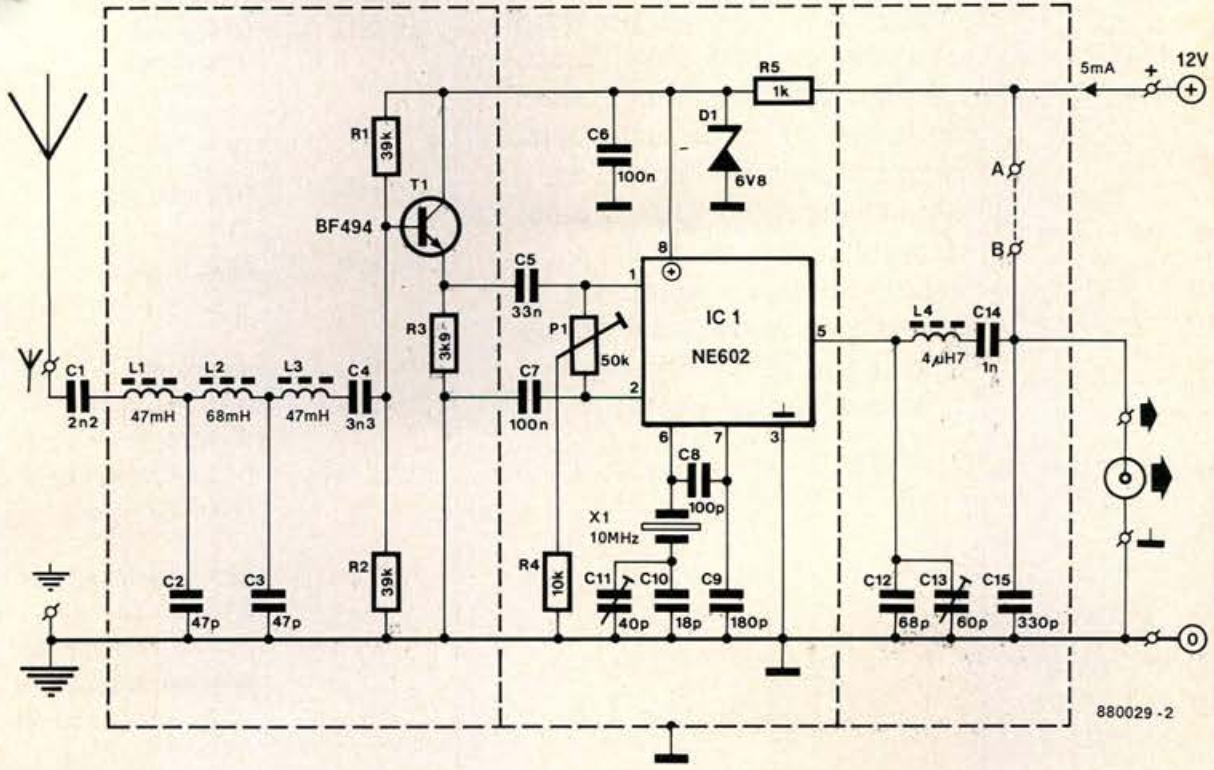

Also abbreviation for AfricaĪFC – Automatic frequency control. Still used in the UK.ĪF – Audio Frequency 20 to 20,000 hertz, the human hearing range.

One or more numbers and/or symbols are keyed in with a telephone key pad and transmitted to the repeater.Īerial – Used in the early days of radio – sometimes referring to an outdoor antenna.
#Vlf receiver circuit listen to meteor code#
Abbreviated as amps.Ī Battery - in early radio, batteries were the prime source of power – The A battery provided the filament voltage, the B-battery furnished the B+ or the Voltage to the plates of the tubes, and the C battery provided the grid-bias voltage for the tubes.Ībsorption – The reduction in a radio signal strength in the ionosphere.Īccess code – (Repeater Term) A code to activate a repeater function e.g. 6.24 x 10^18 electrons moving past a point in one second, equals one ampere. Current is a measure of the electron flow through a circuit per unit of time.
#Vlf receiver circuit listen to meteor install#
We will also install a mast of 12 meters high supported by guy-wires which will act as a VLF antenna.Tranches have been digged and concrete blocks have been made. We will organize a meeting in September/October in order to discuss this topic and maybe to start distributing the material. We will ask everyone if they agree to host a station and who has enough space for it.Twenty 3-element Yagi antennas are under construction at the BIRA workshop and will be distributed as well.We have GPS clocks available for every station (more details about them in another e-mail soon).We have 20 ICOM IC-R75 that eventually will be given to every station of the network to listen to the new frequency 49.97 MHz.

We have 2 antennas : one three element Yagi listening to 49.99 MHz and one crossed three element Yagi listening to 49.97 MHz. It is located next to our institute, in the KMI/IRM park. We will work on this grid during the summer. With this configuration, the gain will be significantly larger. Later on, We will use a metallic grid of 8 m x 8 m as the reflecting part instead of the simple reflecting tube of the Yagi antenna. These tests will also allow us to check we do not perturb the other instruments located on the Dourbes site. For the initial tests in Dourbes, we will use a two-element Yagi antenna like the one in Ieper.We have visited the Dourbes site and have an agreement to use a specific place where we will install the beacon.Nearly all the material has arrived : signal generator, power amplifier, antenna (built in the workshop).Description of material supplied by BIRA for future stations of the BRAMS network At the end of August we will install the VLF antenna (more details soon) and in September we should install the 5 Yagi antennas for the VHF interferometer. The works to build the interferometer in Dourbes have started last wednesday.We will let everyone know when the beacon is emitting. The tests with the new beacon in Dourbes will start within the next 2 weeks.Below we give a nice example of an overdense echo observed around 06:00 AM on 12/08/10 to illustrate the differences in sensitivity and noise level of the AR-5000 (left) and the ICOM R-75 (right): Later on we will use the USRP2 receiver for that purpose. The ICOM-R75 receiver cannot add phases so at the moment we are simply recording both polarizations without adding them. The simple Yagi antenna is connected to the AR-5000 receiver while the two antennas from the crossed Yagi are connected to ICOM-R75 receivers. All antennas are currently listening to the Ieper's beacon on 49.99 MHz. We have been observing since tuesday 09/08/10. The station in BISA is now operational.


 0 kommentar(er)
0 kommentar(er)
